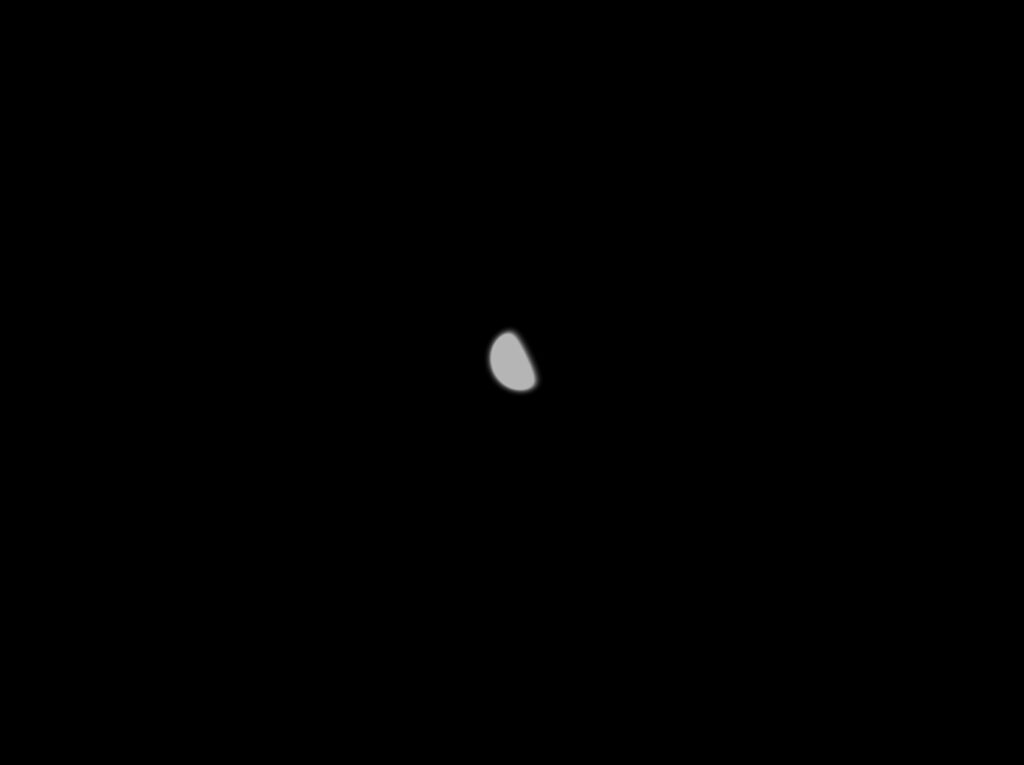In 1610 a glimpse of this object by Galileo through his crude telescope transformed our understanding of the universe. The image is the planet Venus, and Galileo was stunned to see that it goes through "phases" like the Moon.
The only possible explanation for this phenomenon is that Venus and the Earth are both orbiting the Sun, and Venus is nearer to the Sun than the Earth. This became one of the most powerful proofs that the Ptolemaic "geocentric" view of the universe, which placed the Earth at the center of the universe and everything else orbiting around us, which had prevailed for millennia, was wrong. It provided conclusive proof that the Copernican "heliocentric" view, with the Sun at the center of our solar system and all the planets orbiting about it, was in fact correct, despite the Church's teaching to the contrary.
Persons who are unfamiliar with astronomy are often astonished to view Venus through a telescope, and see a crescent or some other phase that is less than a full disk. Since Venus is an "inferior planet" (closer to the Sun than the Earth) it goes through "phases" like the Moon. This is illustrated by this image, which shows Venus at 56% "full."
It is quite remarkable to see Venus for the first time, and see only half or some other fraction of the planet! Venus appears "full" only when it is on the opposite side of the Sun from the Earth ("inferior conjunction"). Since it is more than 100 million miles farther from the Earth at this stage, it appears relatively dim although the full surface is illuminated by the Sun. When Venus is on the same side of the Sun as the Earth, it is never fully illuminated from our perspective. But, since the phase that we do see is so much closer to us, it appears brighter.
Venus is shrouded with a thick layer of clouds that trap heat on the surface and make it the hottest planet (hotter than Mercury, which is closer to the Sun). As a result, most Earth-based photographs of Venus show only a white surface.
One more point about Venus. As an inferior planet it is always relatively close to the Sun in the sky, meaning that it generally is visible only briefly after sunset or before sunrise. It is quite dramatic to see this brilliant object, low in the western sky shortly after the Sun sets.
Venus
Date Taken:January 3, 2009
Location Taken: Conditions of Location: Equipment Used:14.5" Ritchey-Chretien, Lumenera SKYnyx 2.1 camera
Processing Used:composite of 200 images
Distance from Location:varies between 24 million and 160 million miles from Earth
Constellation: Other Link:
